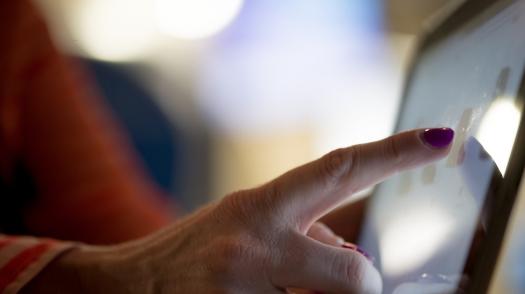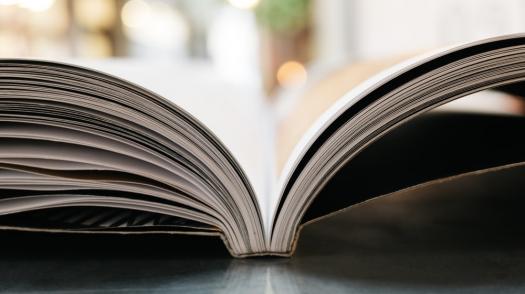This section offers an introduction to acquired brain injury and some of its effects and includes information films.
Thousands of children and their families are affected by acquired brain injury every year.1 It is often shortened to ‘ABI’. The ‘acquired’ part means simply that the child wasn’t born with their injury – it is the result of an accident or illness that has happened later.
Acquired brain injury may be the result of:
- Traumatic brain injury (TBI) – the result of an impact to the head. Examples might be a car accident or a fall.
- Non-traumatic brain injury – some professionals call this ‘a traumatic brain injury’. It is often the result of something like meningitis or a brain tumour.
One way of thinking about it is to say traumatic brain injury is the result of things happening outside the body, such as a blow to the head.
Non-traumatic brain injury is the result of things going on inside the body, such as a stroke or a lack of oxygen.
Confusingly, you may hear some professionals talk about ‘a traumatic brain injury’ as ‘ABI’. But from here on in, we’ll be talking about ABI – acquired brain injury – as a whole.
Acquired brain injury in children is sometimes called ‘paediatric acquired brain injury’ by healthcare professionals.
Are children and adults affected differently?
Very much so.2 Most of us think of children as a work in progress, and the experts agree.3 The human brain carries on developing until we are in our 20's,4 and some research suggests it goes on for many years after that.
If part of the brain is injured during its earlier stages of development, a child might not go on to pick up some of the skills they otherwise might have.5 Or as one acquired brain injury expert puts it, the injury happens when ‘the brain has unfinished business’.
Also, we know that some of the effects of acquired brain injury may not come to the surface until the injured part starts to be used.6 An example might be a five-year-old who has an injury to their frontal lobes (which are above our eyebrows and behind our forehead).
It’s the part of the brain responsible for decision-making, judgment and problem-solving. And the effects of the injury might not become clear until the child is around 12, when they start to use these skills more.7, 8
The difficulties children have might seem to contradict what our common sense might tell us – that a young brain would be better able to ‘bounce back’ to full strength.9 Children may appear to make a full physical recovery,10 but the effects of a brain injury may take weeks, months and sometimes years to come to the surface.11 It is because the changes and difficulties surrounding acquired brain injury are hard to spot that it is sometimes called ‘the hidden disability’. 12, 13
What sort of effects are we talking about?
Each child is as unique in the way they respond to a brain injury as they are in every other aspect of their lives.14, 15 And just as every brain is different, the way each brain is affected by an injury is different.16, 17
And the brain’s job as the ‘command centre’ for the rest of our bodies means there is an enormous range of difficulties a child might face.18 These might range from only minor problems with memory 19 to serious, long-term physical and learning disabilities.
Some parents talk about ‘personality change’ as their child’s behaviour changes after their injury 20, and this can be deeply distressing for parents.21
We started to talk with Casey, but it was clear that she wasn't reacting in the way she used to. That was a hard thing to adjust to as a parent." Parent's experience
One factor that has an influence is what healthcare professionals call the ‘severity’ of the injury. They classify brain injuries as ‘mild’, ‘moderate’ and ‘severe’.22
But some experts say even this isn’t an accurate way to work out how a child will be affected by their injury.23 Even a so-called ‘mild’ injury can cause long-term difficulties.24
‘Severe acquired brain injury’, which affects a minority of children with acquired brain injury 25 may mean children permanently lose the ability to walk or talk.26, 27 Some may have difficulties eating and drinking.28, 29
But the majority of children are likely to experience some of the more common effects listed below.25, 30 It's important to keep in mind that each child’s experience is different.31, 32 And remember that some effects are immediately apparent, while others may come to the surface weeks, months or even years later.33
Common effects of acquired brain injury
It's important to remember that each child will respond differently to their injury. If you'd like to read more about any of the points below, read our dedicated section on the effects of acquired brain injury.
- Weakness of limbs, difficulties getting around 34
- Tiredness – often talked about as ‘fatigue’ by professionals 35, 36
- Changes in behaviour – irritability (a ‘short fuse’37), behaving impulsively or inappropriately 38, 39
- Difficulties learning new things (and learning difficulties 40, 41)
- Problems with memory 42
- Difficulty processing information 43, 44
- Difficulty with concentration
- Emotional difficulties such as anxiety or depression 45
- Difficulties understanding and using language, difficulties keeping up with conversations 46, 47
- Difficulties organising and planning, 48, 49 difficulties carrying out everyday tasks
- Difficulty with empathy - putting themselves ‘in someone else’s shoes’. 50, 51
How is acquired brain injury treated?
The brain is the most sophisticated part of our bodies, and so any injury to it can be equally complex.52 There is no single ‘cure’ or treatment for acquired brain injury, and some children will never fully return to the way they were before their injury.53 Progress may not always be rapid. And some parents face a tough time if the speed of progress slows down over time.54, 55
But there are opportunities for children to get back some of the skills they’ve lost, through different therapies and support.56, 57 Physiotherapy, speech and language therapy, psychology, occupational therapy and many other approaches may have a part to play.58 This ongoing process is called ‘rehabilitation’.
Therapy might take place:
- While a child is in hospital. This is called ‘inpatient rehabilitation’.
- At a specialist centre of some kind. Children might stay at the centre or visit.
- In the community. Therapists or care staff come to the child’s home, school or a local centre.
How is the rest of the family affected?
Any illness or condition in a family can have an enormous impact. In the case of acquired brain injury, the initial shock can leave families with a great deal of stress.59, 60
They may also experience feelings of guilt, blame 61, denial, uncertainty and in some cases, post-traumatic stress disorder.62, 63
Later on in the healing process, parents and siblings face a distressing time if a child shows changes in their behaviour.64, 65, 62 Many families feel a sense of loss for the child as they were before the injury.66, 67 Other children in the family may not fully understand what is happening 68, or may feel left out or resentful.69, 70
It is extremely important that parents remember to look after themselves at this difficult time and seek help and support if they need it.71, 72 Evidence suggests a supportive family environment can make a positive difference to a child’s recovery.73 It’s thought a family’s attitude to their circumstances can make a difference.74 Some parents say they feel they have a stronger bond with their children after the injury.75
If you are concerned about anyone in your family, ask your GP to help you find appropriate services.
How can families know what’s going to happen?
The truth is that nobody has all the answers. The sheer complexity of the brain means even the experts may not know what the outcome will be.76 This uncertainty may hang over a family after their child has returned home, and parents are looking for signs of recovery.
But in all the uncertainty there is also great possibility. The experts may not be able to guarantee the level of recovery, but neither can they rule out the dramatic improvements many families have witnessed.31, 16
As we said above, research has suggested a supportive and positive family environment can help children in their recovery. All friends and family can help in this.
It was really important that we were prepared for the fact he wasn’t going to be quite the same lad he was before. To our friends and relatives, Michael was home from hospital and everything was all okay. But it was tough to see him settle back into his life behaving differently." Parent's experience
My wife and I found it hard to get used to the fact that there wasn’t going to be a simple, definite conclusion to all of this. It had all started very suddenly, but we were told Michael’s recovery was going to be a more gradual, long-term thing. "Parent's experience


